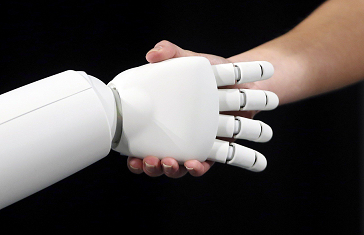Advertising is part of a society as late as ancient Egypt; it had and has a critical purpose in business world by helping to inform consumers about the product or services available in the market and enabling sellers to effectively compete with one another for the attention of buyers.
Major objectives of advertising will always remain promotion, awareness, comparison, retention and morale. However, in today’s digital world advertising is far more complex and fluctuating. It has to adopt with new platforms, devices and ad formats.
More brands are getting into the publishing game
Brands are presenting their messages directly to buyers by creating their own social media platforms in YouTube, Twitter, Facebook, LinkedIn and drawing large internet audience to their content. If the content is good brands are winning an undivided attention from their consumers rather than a momentary glance at the banner ad.
Digital video
U.S. invests in online video ads has increased by 44.5% this past years and it will continue to grow all the way to 2018, because pre-roll video ads are capturing more viewers than the static formats.
Mobile
According to Web tracking firm StatCounter nearly 30% of web traffic is caused by smartphones and tablets. eMarketer predicts strong growth of more than 50% in U.S. mobile ad spending .
Ad budgets are being stolen by botnets
On a bases of Solve Media recent studies advertisers will spend total of 11.6 billion in 2014 on the ads that are seen only by bots, which are programmed to impersonate human traffic. Though the advertising and technology media have paid more attention to the problem in recent months, Solve Media, which gives publishers tools to ensure visitors are human, says fraudulent traffic will continue to be an issue until the entire advertising ecosystem commits to preventing it.
‘Viewable’ ads are becoming a standard
One of the biggest issues in advertising right now is that about half of all online ads are currently placed where users won’t be able to see them. According to a recent survey from the digital advertising company Undertone, 88% of advertisers think their viewing ability will be a big issue in 2014 and 62% plan to work with a third party to help them measure viewable ad impressions.
Twitter, Facebook, and Google are fighting for TV’s big ad budgets
Both Twitter and YouTube have taken substantial steps to woo brands used to buying media on television, with YouTube allowing Nielson to measure its audience the way it does television and Twitter allowing brands to capitalize on its real-time chatter with promoted tweets that run at the same time as their TV ads.
Meanwhile, Facebook trumpets that it has a bigger prime-time audience and better measurement tools than television.
Robots are taking over the ad-buying process
Media buyers are able to automatically purchase an ad inventory just in a second through real-time biding. By using complex formulas to automate the process, publishers and brands are able to find the ideal price for an ad served to a specific person in a specific place.
At this point, just about every major web publisher sells at least part of its inventory programmatically, rather than having a sales representative to sell ads face-to-face.
TV and online video are becoming one
One thing we’ve heard repeatedly from advertising executives is the idea that in the very near future, we will think of video as a singular medium regardless of the screen it’s viewed on or how it’s delivered.
Devices like Smart TVs, which allow people to watch traditionally desktop-native content from YouTube on their TVs, and TV Everywhere apps like Watch ESPN, which allow people to watch TV content on their computers and phones, have blurred the lines between TV and online video.
What do you think about digital trends in advertising? Your views about real-time biding, brands own social media campaigns, ‘Viewable’ ads, botnets, digital video and mobile ads? Will robots take over?

